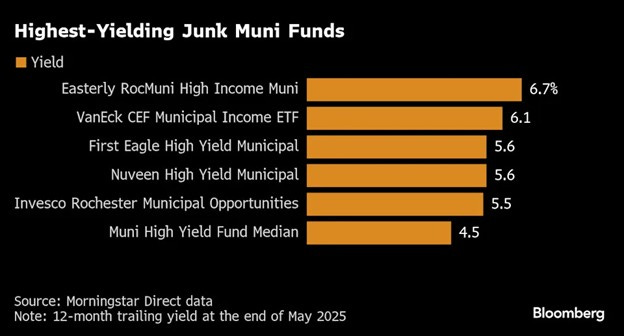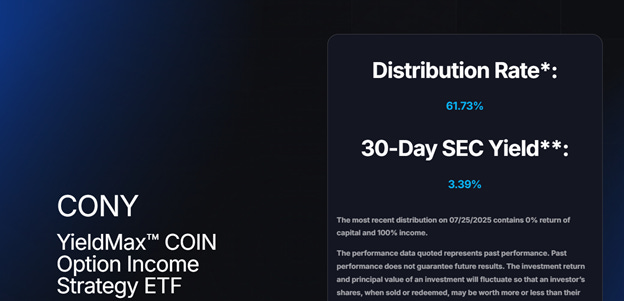Three Articles About Trying to Beat the Market
The Hidden Costs of Chasing Returns, Income, and Safety
Pigs Get Fat, Hogs Get Slaughtered
From Bloomberg: Municipal Bond Fund Collapse Exposes Dangers of Junk Debt
Munis are not like Treasuries. Every bond is different. Some munis are backed by the full faith and credit of the state, while others are backed by nothing more than a facility built to turn cooking oil into biodiesel.
The highest yielding muni fund, Easterly Rock High Income, took on more risk to try to maintain its category-leading income stream (6.7% v the median of 4.5%), and as a result lost 50% of its value over the course of two days, as sudden outflows forced the fund manager to unload troubled assets at prices far below the estimated values they had set.
Stretching for slightly higher income often comes with a lot of added risk. I don’t recommend it.
Huge Distribution Rates Aren’t as Good as They May Seem
From Basis Pointing: Wish I Was Making This Up / An ETF gains 42% a year; its investors still lose money.
YieldMax creates income ETFs by applying option strategies to securities that don’t normally generate income. Their Coinbase ETF (a fund tied to the performance of Coinbase stock) is a good example. The current yield on ticker CONY is about 60% and the fund gained 41.9% per year from its Aug. 14, 2023 inception through Apr. 30, 2025. Over that period, the ETF received nearly $2 billion in cumulative net inflows, and its daily assets averaged around $560 million.
Despite the impressive numbers above, investors collectively lost $35.5 million. From the Basis Pointing article:
When you take investors’ errant timing together with the manager’s modus operandi of making huge distributions, it’s sapped the asset base’s compounding power. [T]he ETF’s earnings haven’t been sufficient to fund the distributions. To plug the hole, the manager has returned capital, again and again.
This has likely had a pernicious effect: Investors pile in at the wrong time, just as returns are starting to roll over. Those depressed investments could recoup those losses and make gains, but because the ETF pushes out so much capital—in order to uphold the pretense of making huge distributions—it arrests compounding. That kneecaps the ETF’s ability to compound the earnings it needs to fund those payouts, leaving investors with losses in dollar terms, even as the ETF makes huge gains.
There are no free lunches. Just because a fund shows a 60% distribution rate doesn’t mean it actually makes money for its investors.
The High Cost of Safer Stock Investing
From Wealthmanagement.com: Boomer Candy: Simple Strategies at Premium Prices
“Boomer Candy” is a term coined by The Wall Street Journal to describe a new breed of buffered ETFs that seem to promise what every retiree dreams of: stock market upside with zero downside.
I’ve written about these products before, but the sample ETF described in the article offers complete downside protection and a 9.81% cap on gains over a one-year period.
As good as that sounds, since 1990, this strategy would have delivered approximately 4.1% annualized returns versus 10.5% for the S&P 500. That’s a 6.4 percentage point annual drag on performance.
It’s also just a really expensive way to invest 95% of your money in a Treasury bill and 5% of your money in an S&P 500 call spread.
Stock investing only generates returns above a risk-free Treasury because it involves risk. If you eliminate the risk, you also eliminate the excess return. That is just how investing works.
The puppy I posted last week has since been adopted, so my wife brought this one home from the Rescue Ranch.
The name on the paperwork is Miracle, but my kids call her Fluffy. She’ll be available for adoption next week.







When it comes to writing about investments, the disclaimers are important. Past performance is not indicative of future returns, my opinions are not necessarily those of TSA Wealth Management, an SEC-registered investment advisor, and this is not intended to be personalized legal, accounting, or tax advice etc.
For additional disclaimers associated with TSA Wealth Management please visit https://tsawm.com/disclosure or find TSA Wealth Management's Form CRS at https://adviserinfo.sec.gov/firm/summary/323123
☕️Nice. “ fireside reading “ this early, cold ( 39* ) morning , Carbondale CO ( ASPEN ).